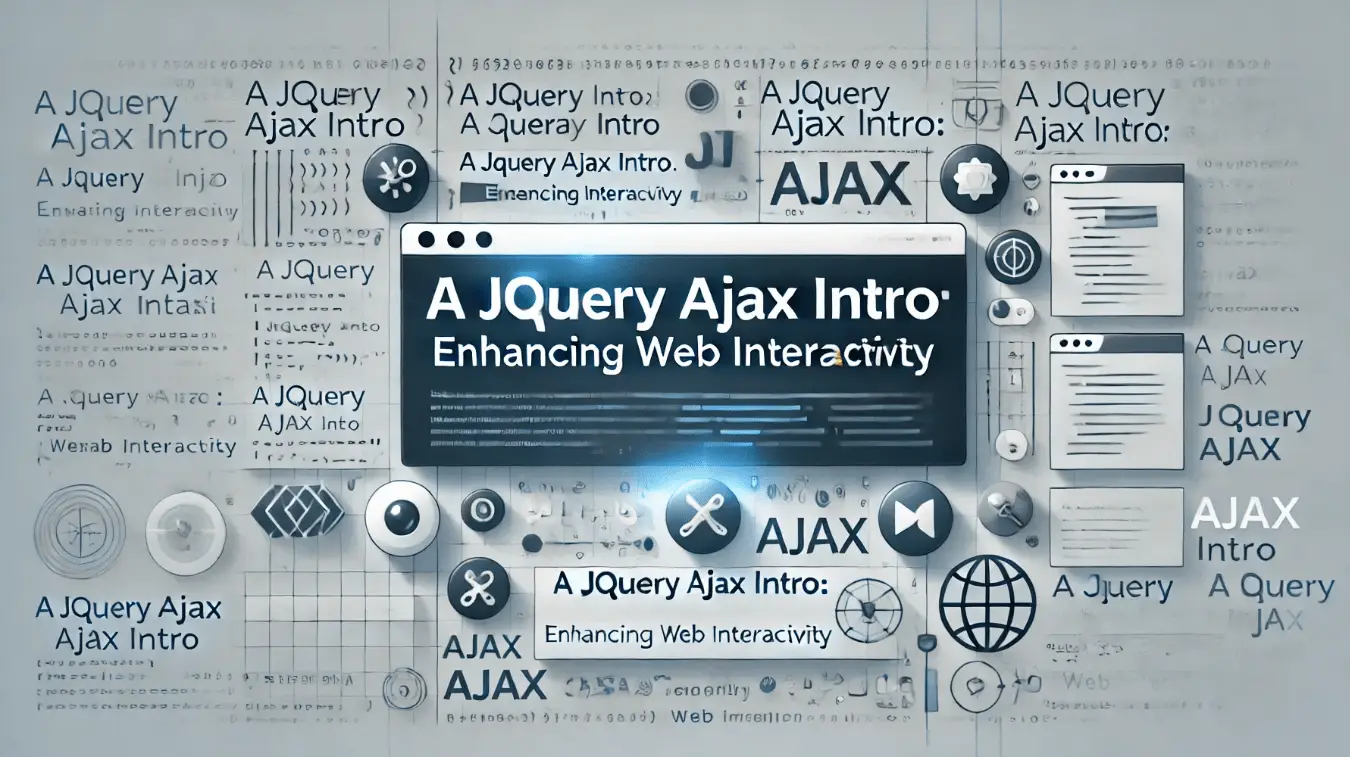Table of Contents
ToggleAjax Intro
In the constantly evolving domain of web development, the paramount focus remains on creating engaging and interactive user experiences. jQuery, an agile and robust JavaScript library, has transformed how we manage asynchronous data loading, streamlining development workflows, and elevating the quality of user interactions. In this article, we’ll delve into the basics of jQuery Ajax and explore how it can be employed to enhance web interactivity.
Understanding Ajax(Ajax Intro)
Ajax, which stands for Asynchronous JavaScript and XML, is a web development technique that enables the updating of a web page without requiring a full page reload. This technique allows for asynchronous data exchange with a web server, providing a smoother and more responsive user experience.
The Power of jQuery
jQuery, with its concise syntax and powerful features, streamlines the implementation of Ajax. It simplifies common tasks, such as handling events, manipulating the DOM, and making asynchronous requests, making it an ideal choice for developers aiming to boost productivity.
Getting Started with jQuery Ajax(Jquery Ajax Intro)
To use jQuery Ajax, start by including the jQuery library in your HTML file. You can either download the file and store it on your own server (self-hosting) or you can use a Content Delivery Network (CDN) to host the file for you. Once included, you can make Ajax requests using the $.ajax() method.
$.ajax({
url: 'https://api.example.com/data',
method: 'GET',
dataType: 'json',
success: function(data) {
// Handle the successful response
console.log(data);
},
error: function(xhr, status, error) {
// Handle errors
console.error('Error: ' + error);
}
});
Key Parameters
- url: Specifies the URL to which the request is sent.
- method: Defines the HTTP request method (e.g., GET, POST).
- dataType: Specifies the expected data type of the server response (e.g., json, html).
- success: A callback function executed when the request is successful.
- error: A callback function executed if the request encounters an error.
Simplifying Code with Shorthand Methods(Jquery Ajax Intro)
jQuery provides shorthand methods for common Ajax tasks, such as $.get(), $.post(), and $.getJSON(). These methods offer a more concise syntax for making specific types of requests, reducing the amount of code needed.
$.get('https://api.example.com/data', function(data) {
// Handle the data
console.log(data);
});
Conclusion(Jquery Ajax Intro)
In conclusion, jQuery Ajax is a powerful tool for enhancing web interactivity by enabling seamless data exchange between the client and server. Its simplicity and versatility make it a valuable asset for developers looking to create dynamic and responsive web applications. As you continue your journey into web development, mastering jQuery Ajax will undoubtedly open new avenues for creating engaging user experiences.
